Shaanxi cuisine, also known as Qin cuisine, is represented by Guanzhong cuisine, southern Shaanxi cuisine and northern Shaanxi cuisine. Although Shaanxi cuisine does not have the name of Shaanxi cuisine among the eight major cuisines, Qin cuisine is actually one of the oldest cuisines in China. Because of the relationship of the ancient "Silk Road", the flavor of Qinlong is mainly composed of yamen dishes of the Han nationality, merchant dishes, market dishes, folk dishes and halal dishes of ethnic minorities. The characteristics of the dishes are "three outstanding", one is the main ingredient: beef and mutton are the main ingredients, supplemented by mountain and game; the second is the main flavor: a dish has many condiments, but there is only one main flavor, sour. Spicy, bitter, sweet and salty are only in the early stage; the third is outstanding fragrance: in addition to using coriander as an ingredient, dried chili, vinegar and pepper are often used.
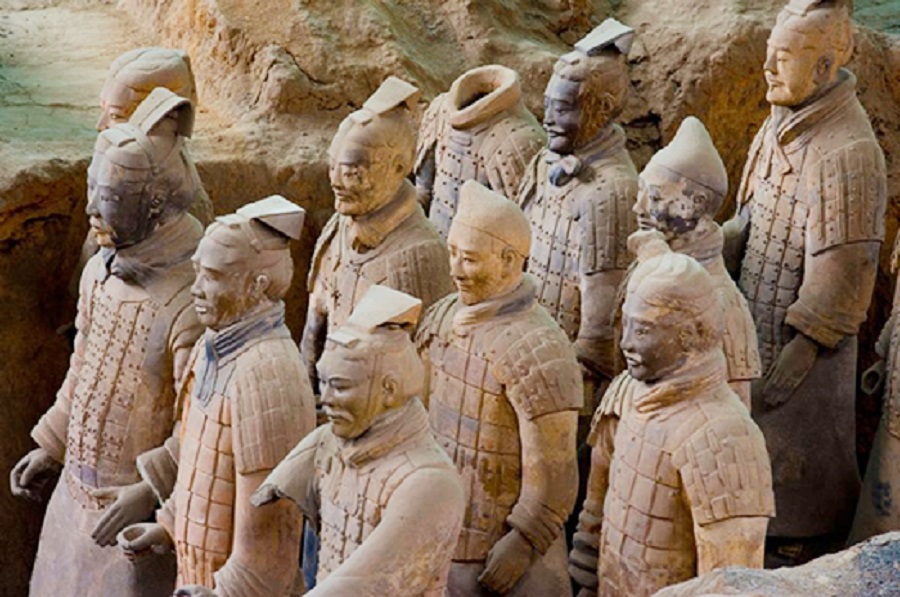 Powder soup sheep blood
Powder soup sheep blood
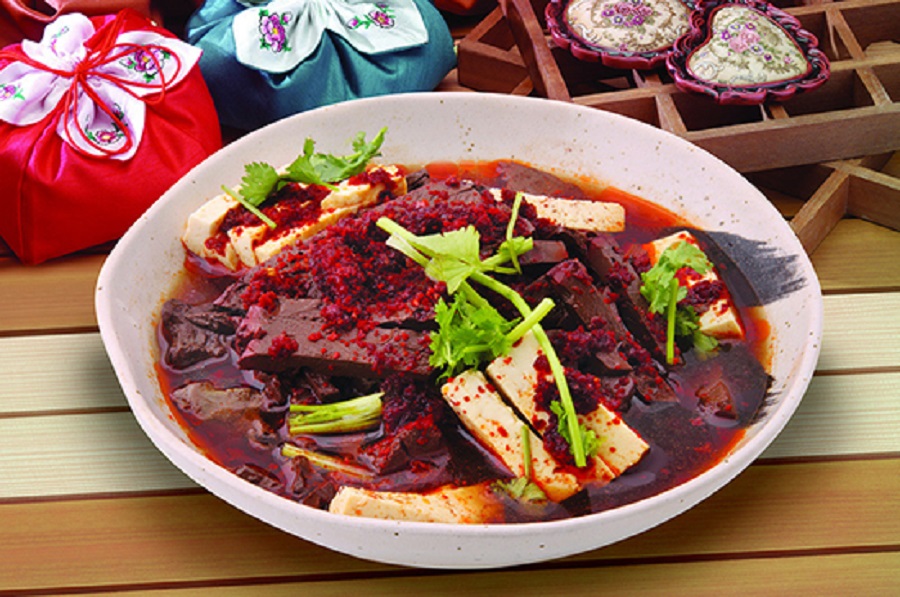
It is refined by three steps of blood preparation, seasoning and steamed buns. Eat with vermicelli, parsley and other accessories. The sheep's blood is fresh and tender, the vermicelli smooth and soft, and the spicy fragrance is tangy. Best eaten in cold winter. And because most of the seasonings used are traditional Chinese medicines that warm the stomach and fragrant, it is especially favored by old customers with weak stomachs. To eat powder soup and sheep blood, you can ask for the soup to soak the cake and eat it, or you can break it into copper coin powder soup sheep blood powder soup the size of sheep blood, and give it to the master to soak it.
Spicy Meatball Soup
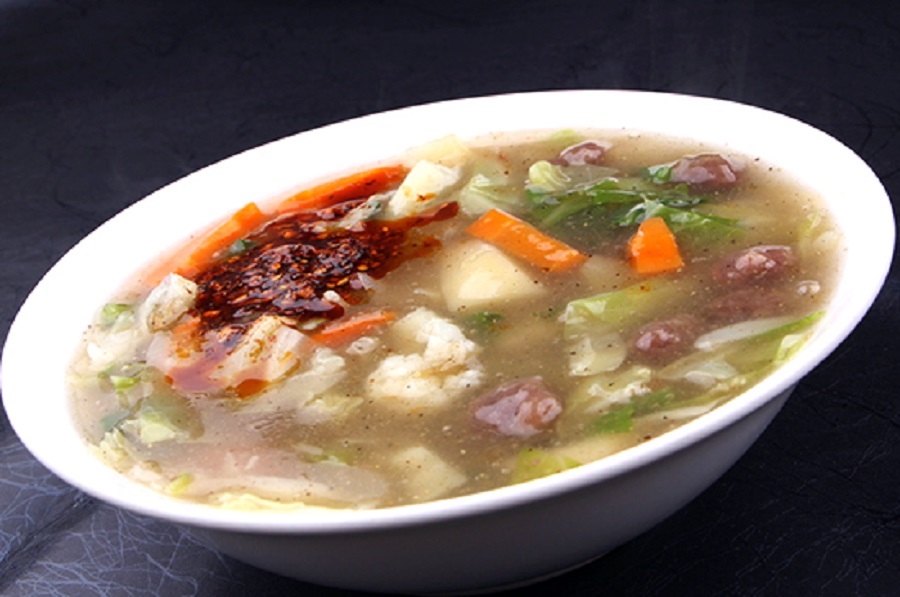
It can be said to be vegetable beef ball soup, or beef ball stew, but the difference from other places is that the soup needs to be thickened. The soup has round beef balls, cubed potatoes, lotus white, carrots, cauliflower, celery, etc. First make soup with beef and mutton bones, add beef balls, stew vegetables, and finally thicken it. Before eating, pour a spoonful of the red and bright chili oil carefully brewed by the store, and after eating it, you will feel numb on the tip of your tongue (prickly prickly ash), sweat slightly, and feel comfortable all over. There is another elegant name for the meatball paste spicy soup called Bazhen soup, which is naturally exaggerated, but this also shows that paste spicy soup has a lot of "content".
Beef and mutton
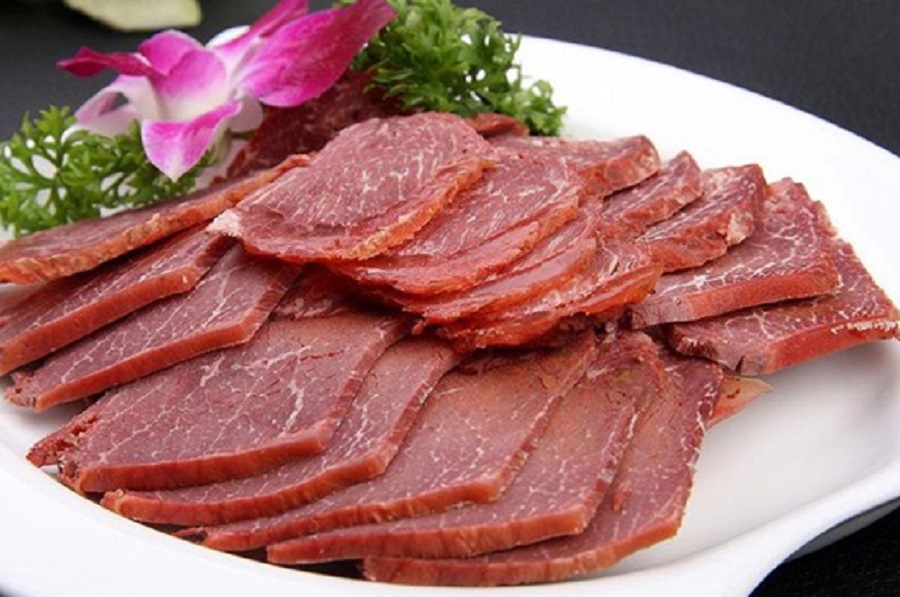
Although many places have preserved beef and mutton, in fact, as early as more than 2,000 years ago, Zhang Lu was called the King of Hanning, and he was defeated and went south to Bazhong. In six years, the Empress Dowager Cixi and Emperor Guangxu took refuge in Xi'an. The local officials in southern Shaanxi once paid tribute to the beef and mutton. After eating it, Cixi was full of praise. In the winter and twelfth lunar month, every household will marinate the meat in a vat with salt and spices such as pepper and star anise, and then smoke it slowly with fireworks.
Ming Si Xi
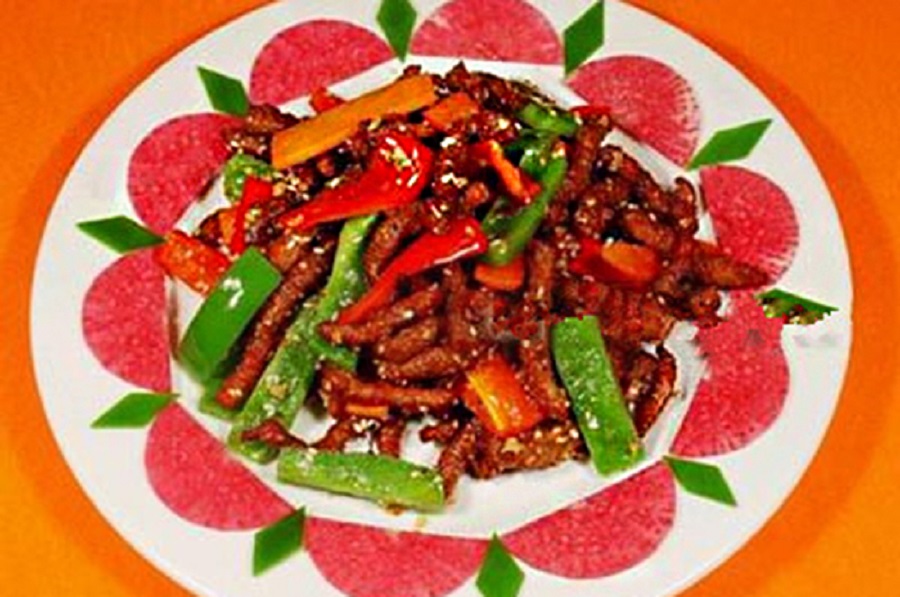
Because the northwest region is far from the seaside, seafood is very precious and rare, so this dish is one of the high-level banquet dishes of Qinlong flavor and is a traditional famous dish in Xi'an. The main ingredients are fresh abalone, water fish maw, water sea cucumber, Shaoxing wine, water squid, chicken clear soup, etc. The key to ensuring the quality of this dish is to hang the soup well. Boil the ham for five or six hours to become the main soup.
Gourd head
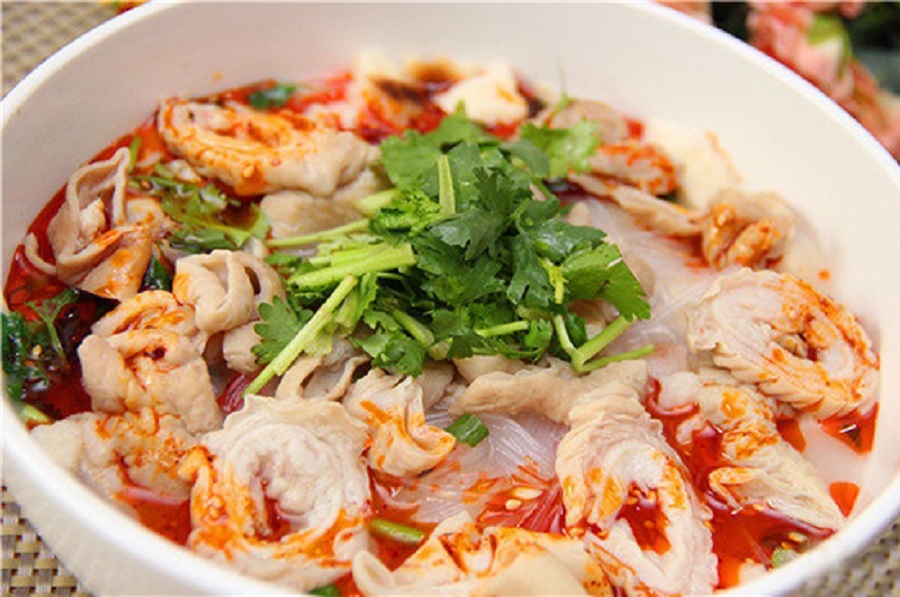
It is a special snack of the Han nationality in Xi'an, Shaanxi Province, which originated from the market food "fried white sausage" in the Northern Song Dynasty. Because the fat in the large intestine of pigs is thicker and shaped like a gourd, it is called gourd head. With the development of society, gourd head has been developed from meat to many varieties including seafood. Pork gourd head has added bones and chicken to the soup to make the soup more mellow, and seafood is added with squid, sea cucumber and other raw materials . When eaten, it is served with candied garlic, kimchi, and chili sauce.
Shaanxi Liangpi
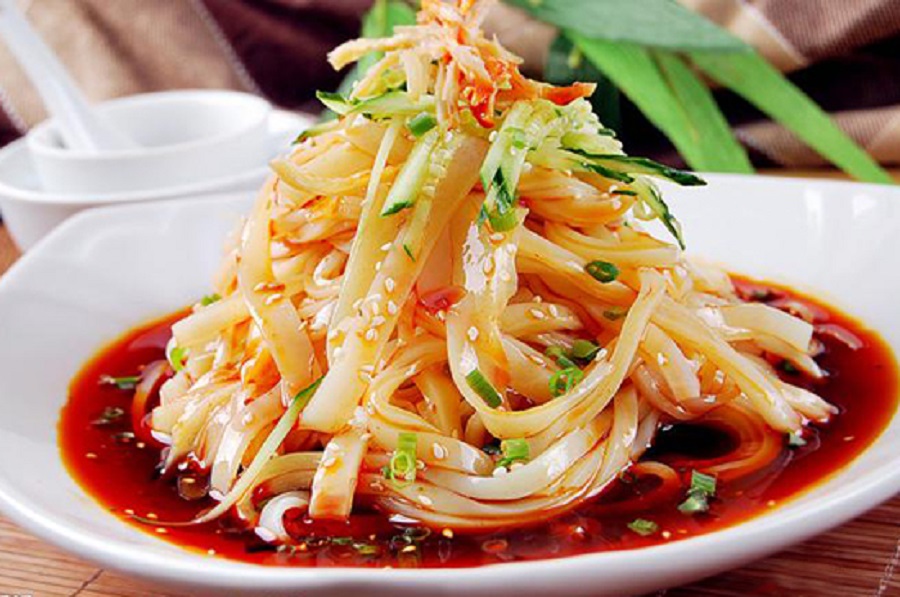
Generally, it is eaten as a cold salad. The main ones are: sesame paste cold skin, Qinzhen rice skin, Hanzhong noodles, Qishan rolling noodles, gluten cold skin and so on. It is mostly made of wheat flour, but also rice flour or other starches. Liangpi has a long history. The legend of Liangpi originated from the Qin Shihuang period. According to legend, one year there was a severe drought in Qin Town, Huxian County, Shaanxi Province, and the people were unable to accept rice. Qin Shihuang was overjoyed after eating it, and ordered to make and eat it every day, forming a famous traditional snack for a long time.
Pita Bread In Mutton Soup
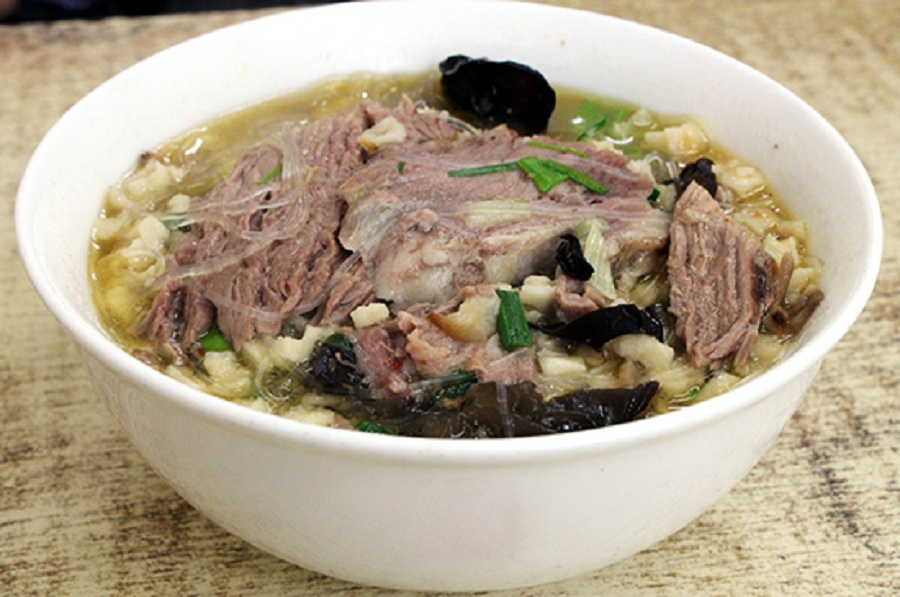
Referred to as mutton bubble, bubble steamed bun, called "Yangkan" in ancient times. Su Shi, a poet in the Northern Song Dynasty, left a verse of "long food has bear wax, Qin cooking only yokan". The mutton steamed bun is finely cooked, the material is heavy and mellow, the meat is rotten and the soup is thick, fat but not greasy. Paomo pays attention to the soup and the meat is rotten. The most important thing is to cook the soup. The bone soup and the broth are cooked separately. Now, beef and mutton steamed buns have become the "general representative" of Shaanxi's famous food.
Pot helmet
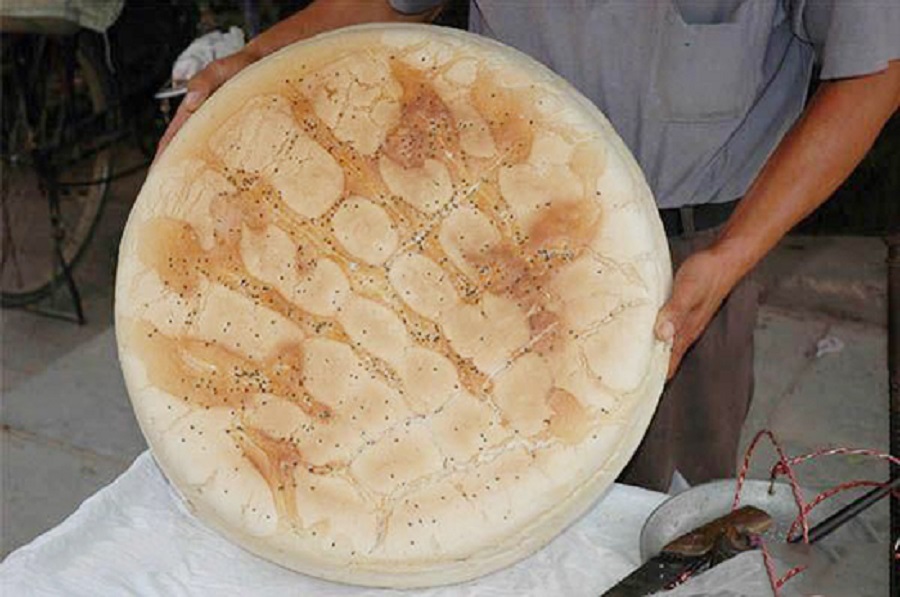
Shaanxi Guokui, also known as Guokui, Guokui Mo, Gan Mo. Guokui originated from the gift that grandmother gave to grandson He Miyue, and later developed into flavored convenience food. The pot helmet is round as a whole, about a foot in diameter, 1 inch thick, and weighs 5 pounds. Take wheat flour, press stalks and noodles, and bake in a shallow pan over slow fire. The appearance is yellowish, the incision is sandy white, crispy and palatable, it can be stored for a long time, and it is easy to carry. Among the "Top Ten Weird Monsters in Shaanxi" compiled by people outside the province, one of them is "Branded buns are like pot lids", which refers to pot helmets. The more famous ones in Guanzhong are Ganzhou Guokui, Wugong County Guokui, Changwu County Guokui, Qishan County Guokui, Fufeng County Guokui, and Fengxiang County Guokui.
Hanzhong Remipi
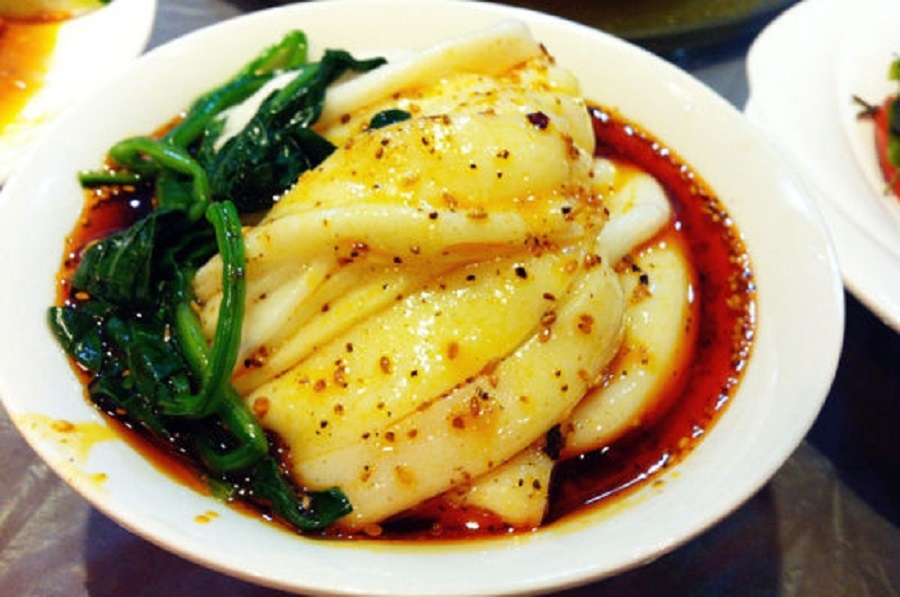
Locally known as "Hanzhong Hot Noodles" in Hanzhong, it is one of the Han nationality special rice foods in the Hanzhong area in southern Shaanxi Province. The local people generally mainly use rice milk as the raw material, and occasionally they are made with wheat flour (called "noodle skin" locally) or mixed with other starches in rice milk and flour paste, but the "noodle skin" is not emphasized. Rice milk production.
Roujiamo
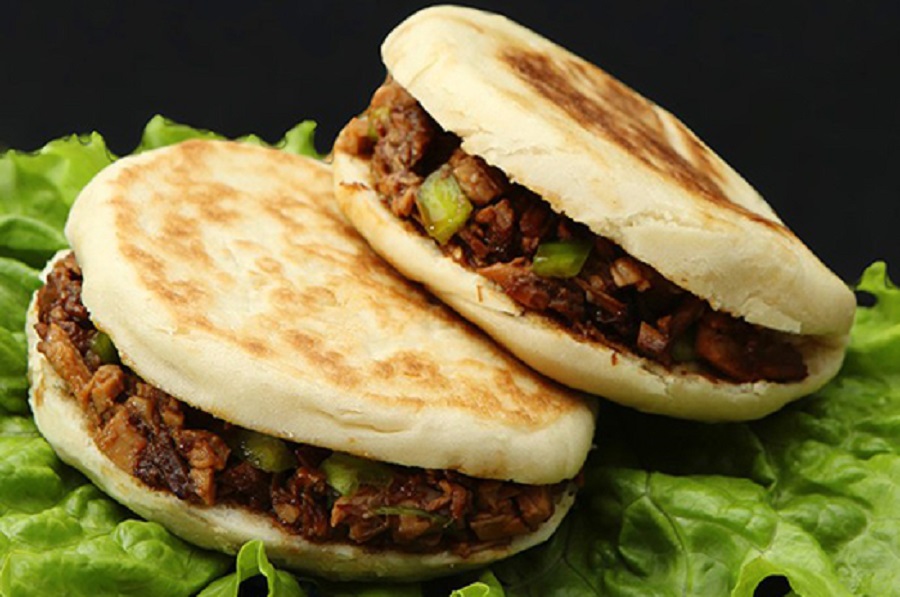
It's actually a wonderful combination of two kinds of food: pork in bacon, white ji bun. Roujiamo is a combination of bacon and Baijimo, which complement each other and bring out their respective flavors to the extreme. The steamed buns are crispy, fat but not greasy, with endless aftertastes. Bacon sauce has a long history and is famous in China. With Baiji Mo, it has the reputation of Chinese-style burgers, and is well-known at home and abroad, and is deeply loved by people. Baked Rou Jiamo is carefully prepared from more than 30 kinds of seasonings. Due to the fine selection of ingredients, the skill of fire, and the use of old soup, the prepared bacon is distinctive, with ruddy color and fragrant smell. The meat is soft and glutinous, eroded but not rotten, rich and mellow, and has a unique flavor.
Lamb in a Basin
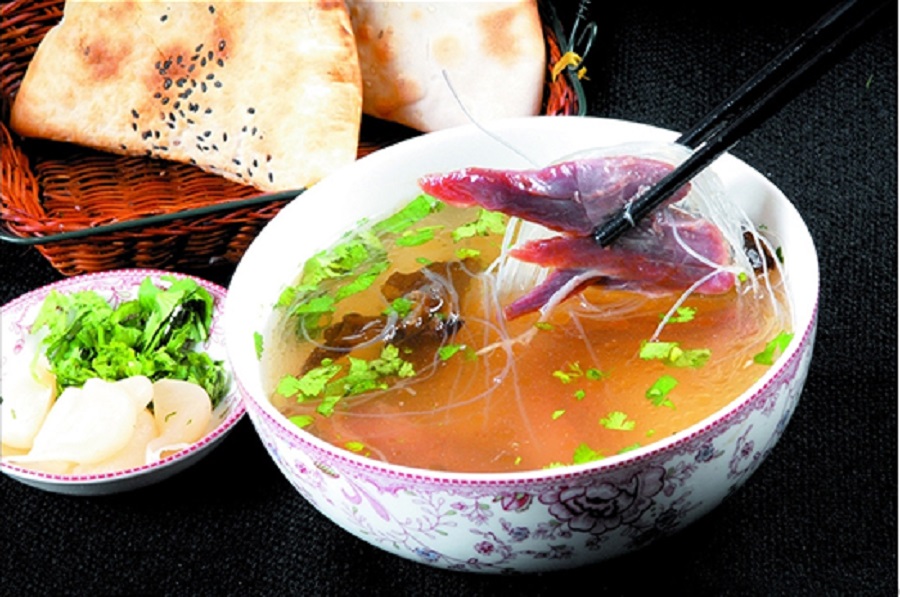
"Water basin mutton", also known as June Xian, was developed from "yokan" more than 1,000 years ago. Because it is listed in the sixth month of the lunar calendar, it is called "June Fresh". When Shaanxi people eat mutton in a water basin, they usually eat it with Baiji bun or Guo Kui, accompanied by fresh garlic, hot sauce or candied garlic. soup.
Qishan saozi noodles
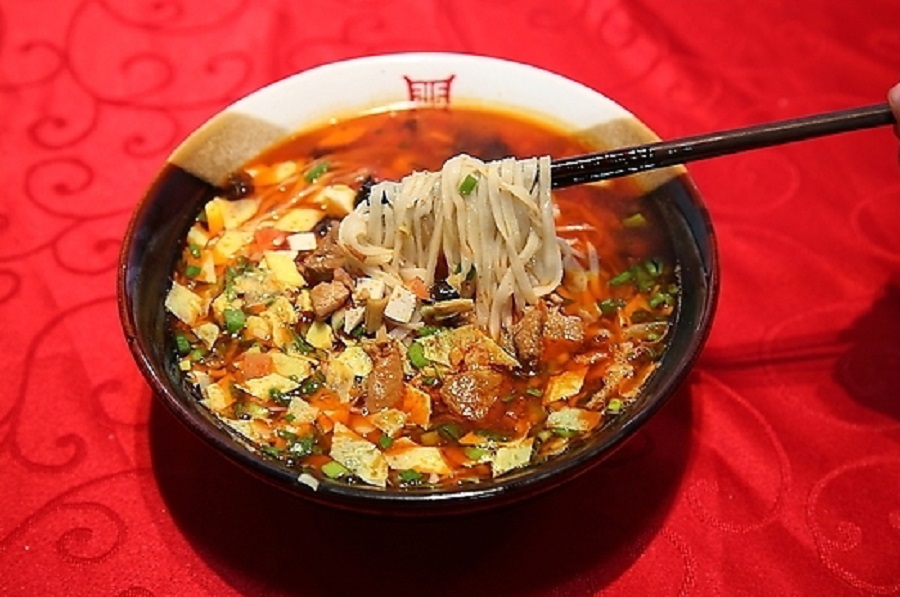
Saozi noodles are traditional noodles in Northwest China and a famous snack in Xifu. There are dozens of varieties. Noodles are slender, even thickness, fresh and fragrant sage seeds, red oil floating noodles, hot and sour soup, tenacious and refreshing, suitable for all ages. Among them, Qishan saozi noodles are the most famous. Saozi noodles have a long history. The most important thing about saozi noodles is saozi soup, which is the soul of saozi noodles. It also contains side dishes such as tofu, eggs, etc., which is easy to make. A bowl of qualified sangzi noodles should have the characteristics of "white noodles, thin gluten and light, oily, sour and spicy".
Rose mirror cake
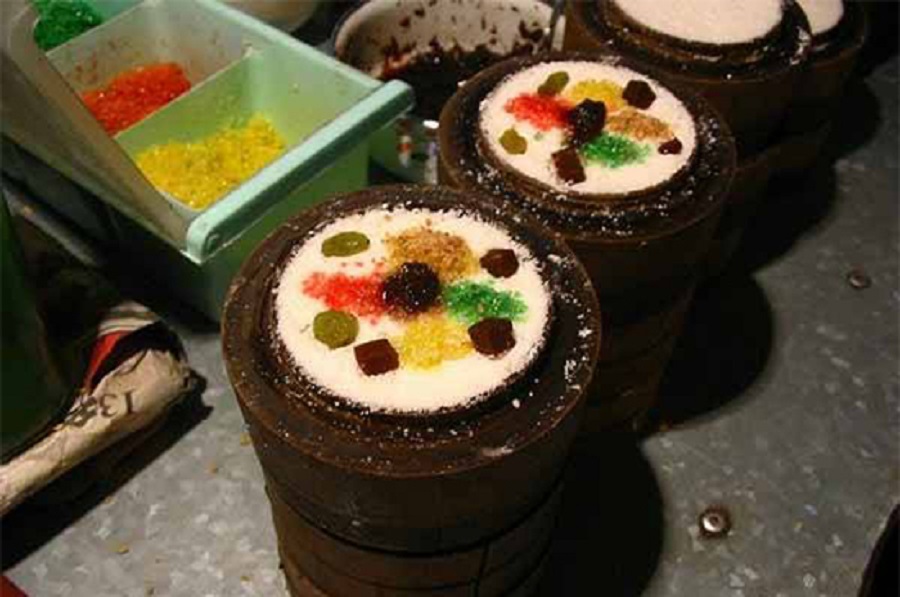
A traditional snack in Shaanxi, a cake shaped like a round mirror steamed from glutinous rice. Most of the people who manage the mirror cakes sell them on the stalls. There are several drawers in the trolley cabinet, where raw materials such as glutinous rice, red and white sugar, walnut kernels, roses, green and red silk are placed. After the Xiaolongzhong cake is steamed, it will be tied with a bamboo skewer and given to the customer. The white tough cake steamed from glutinous rice flour is sprinkled with fine four-color powdered sugar, and a thin layer of sesame seeds is spread.
Gold line oil tower
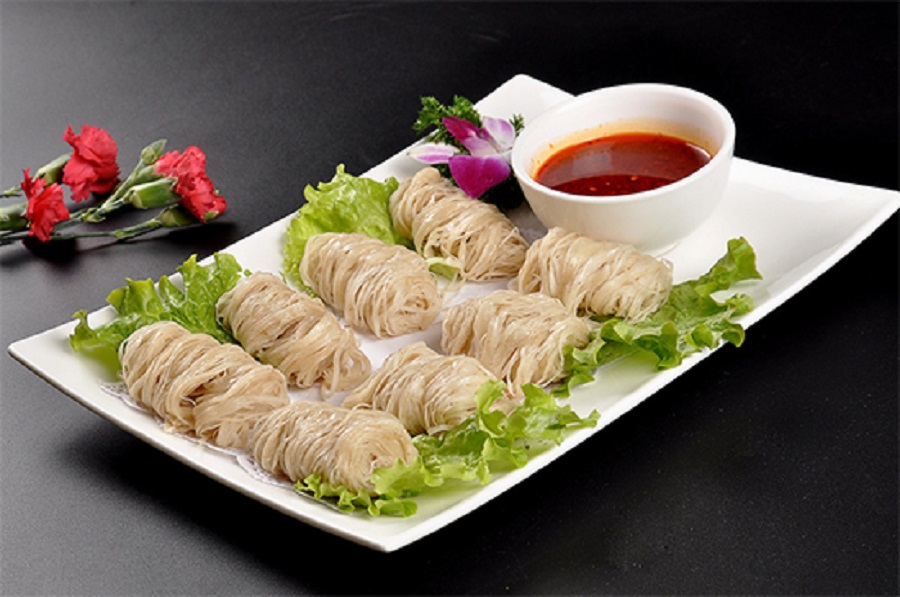
The golden thread oil tower is a precious traditional snack of the Han nationality in Xi'an, Shaanxi. It is multi-layered and thin, loose and not greasy, and its shape "lifts like a golden thread, and puts it down like a pine tower", hence the name. According to legend, it started in the Tang Dynasty, and its original name was "you slump". It was improved in the Qing Dynasty. It used high-quality flour, pork suet and other raw materials to increase the layer of oil cakes, change the cake shape to a tower shape, and change the baking to steaming. It has also been changed from "oil collapse" to "Golden Line Oil Tower", which has become a superior beauty spot. When the oil tower is steamed and eaten, it is slightly shaken by hand and placed on a plate. It is served with spring onion, sweet noodle sauce, etc.
Biangbiang noodles
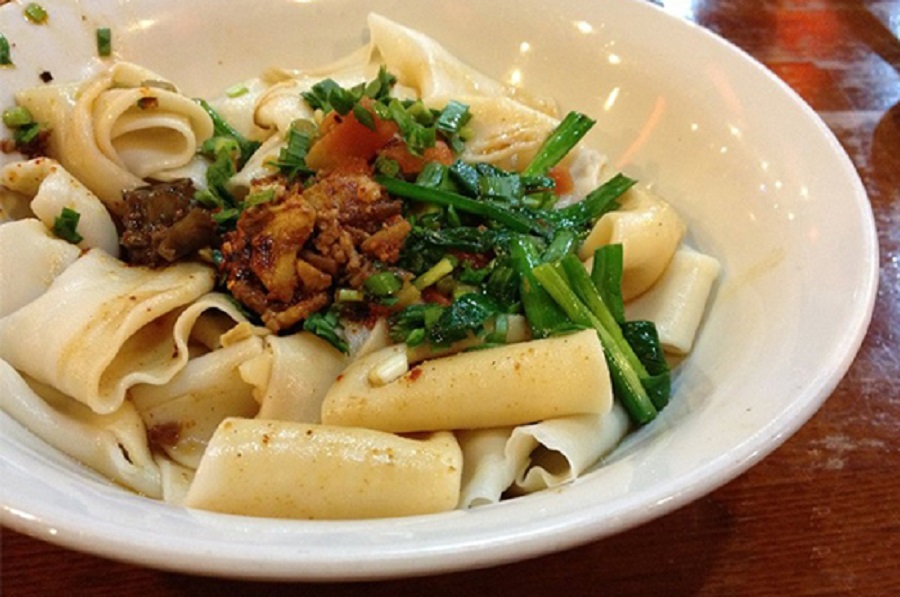
It is a traditional flavored pasta in Guanzhong, Shaanxi, also known as trousers noodle. It refers to the flour ground from Guanzhong wheat, which is usually drawn into long and thick noodles by hand. It is made from high-quality flour, mixed with soy sauce, vinegar, monosodium glutamate, pepper and other condiments into the noodle soup, fished in the noodles, and topped with hot vegetable oil. The high calorie content of this pasta can meet the energy needs of the day.
Conclusion:
The ancient Shaanxi cuisine really brings you a lot of taste experience with national characteristics. Roasted and steamed vegetables with complete shape, strong juice and fragrant flavor; crisp and tender main ingredients, fresh and smooth simmered vegetables; warm mixed dishes with strong local flavor, neither cold nor hot, with fragrant garlic and strong local flavor. Each is enough to trigger the taste buds on the tip of the tongue. Please pass on this food collection, so that more people can understand the food culture of Shaanxi!















